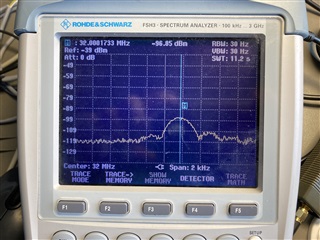Hello
The Uart Baudrate is initiliazed at 115200 baud but i the BLE nRF52833 is sending with about 115900.
I try to switch to hf clock but the baudrate is to high.
// Request and wait for it to be ready.
err_code = sd_clock_hfclk_request();
APP_ERROR_CHECK(err_code);
uint32_t hfclk_is_running = 0;
while (!hfclk_is_running)
{
APP_ERROR_CHECK(sd_clock_hfclk_is_running(&hfclk_is_running) );
}



 Hello Marjeris
Hello Marjeris